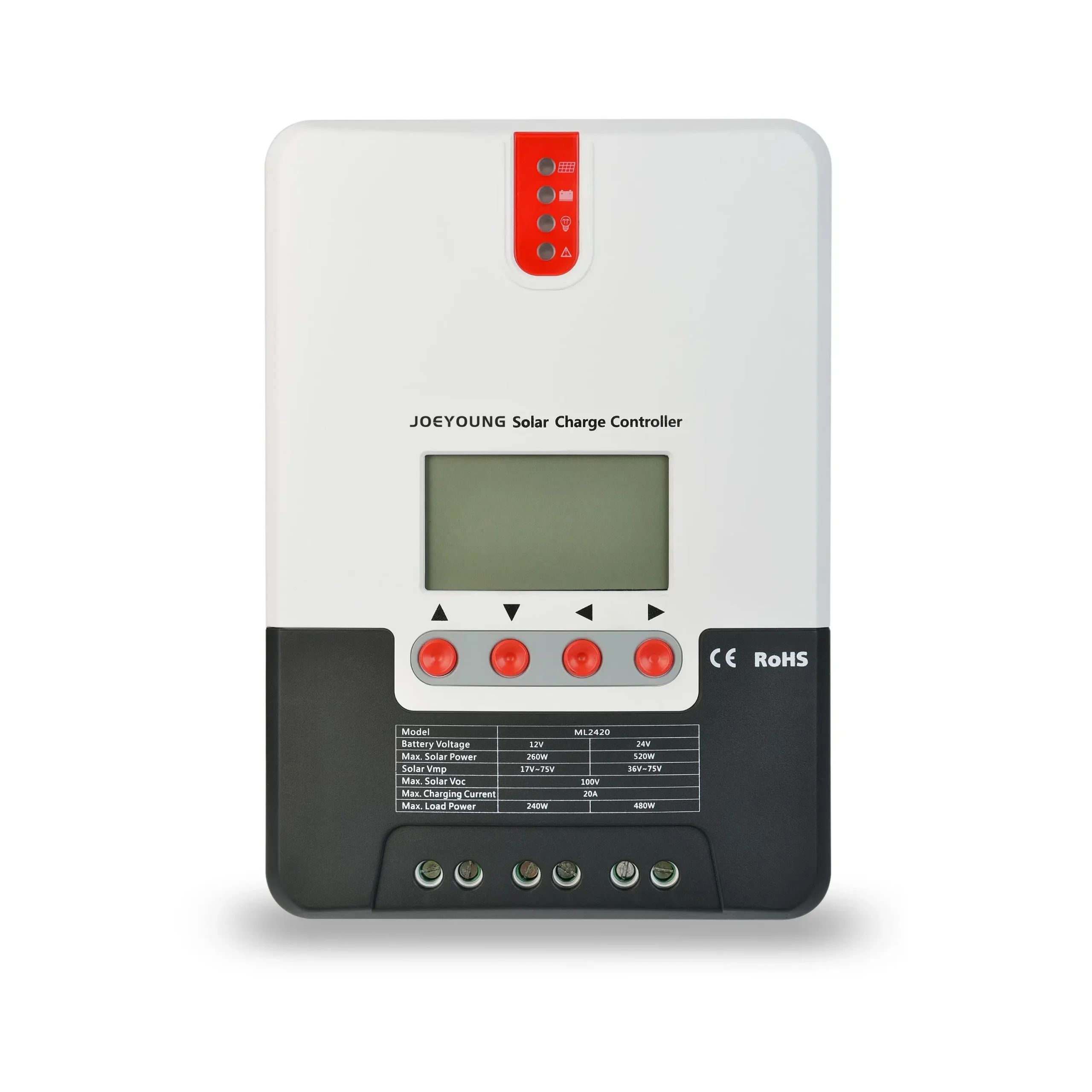







12/24/36/48V 30A MPPT Solar Smart Charge Controller for LifePo4 Batteries
- DML Series, PV100~150V, 20-60A, 12/24/48Vdc, MPPT Solar Charge Controller
The 12/24/36/48V 30A MPPT solar charging controller is an efficient and intelligent solar charging solution designed specifically for LifePo4 batteries and photovoltaic panels. Adopting advanced maximum power point tracking (MPPT) technology, it can track the maximum power output point of photovoltaic panels in real time, convert solar energy into electrical energy, and charge the battery with the highest efficiency. Supports automatic recognition of four voltages: 12V, 24V, 36V, and 48V, with a maximum charging current of 30A and a rated power of up to 1600W, meeting the needs of various application scenarios.
- Wide voltage adaptability:
- Strong charging performance
- High power output with a rated power of up to 1600W.
- Customized for specific batteries and panels
- 24V controller supports RS232 communication.
- 48V controller supports both RS232 and RS485 communication.

- With LCD Display
LED fault indicators and an LCD screen which can display abnormality information help users to quickly identify system faults.

- With DC Output Terminal
Comes with a DC output terminal, making it convenient to directly connect and use DC devices.

- 24/48V Products With RS232/485
The 24V/48V products feature RS232/485 communication interfaces, enhancing the system’s remote management and data transmission capabilities.
| Parameter Name | Parameter Value |
|---|---|
| Model | DML-MPPT-4830A / DML-MPPT-4830A-Li |
| System Voltage | 12V/24V/36V/48V Auto |
| No-Load Loss | 0.7 W ~ 1.2W |
| Battery Voltage | 9~ 70 |
| Max Solar Energy Input Voltage | <150V |
| Max Power Point Voltage Scope | Battery Voltage +2V ~ 120V |
| Rated Charging Current | 30A |
| Rated Load Current | 20A |
| Max capacitive load capacity | 10000uF |
| PV System Max Input Power | 400W/12V 800W/24V 1200W/36V 1600W/48V |
| Conversion Efficiency | ≤98% |
| MPPT Tracking Efficiency | >99% |
| Temperature compensation coefficient | -3mv/℃/2V(Default) |
| Working Temperature | -35℃ ~ +45℃ |
| Protection Level | IP32 |
| Weight | 2.3Kg |
| Max Wiring Size | 25 mm 2 |
| Communication Mode | RS485, RS232 |
| Altitude | ≤ 3000m |
| Product Size | 226*182*81mm |
It is generally not recommended to use indoors. Because it is a device used to connect photovoltaic (PV) panels and lithium batteries (LifePo4), PV panels usually need to be placed outdoors to receive sunlight to generate electricity, and may generate certain heat during charging, which may pose safety risks and malfunction when used indoors.
This charging controller has a certain power processing capability. When connecting the PV panel, the maximum power of the PV panel should be within its acceptable range.
The charging speed is mainly controlled by the charging controller based on the current state of the battery (such as battery level, voltage, etc.) and the output power of the PV panel. Meanwhile, the output power of the PV panel also affects the charging speed.








